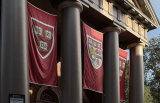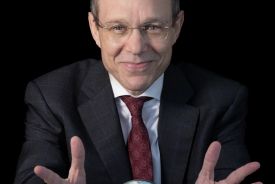‘Doctor Strange’ A Trippy Movie: Steve Ditko’s Psychedelic Visuals On Big Screen; Sets Big-Budget Special Effects Standards [VIDEO]
ByMarvel's "Doctor Strange" is a certified blockbuster, but its biggest entertainment value is not the magic, sorcery or the bendable worlds. Rather, the movie was able to successfully bring the psychedelic visuals of artist and co-creator Steve Ditko into the big screen. "Doctor Strange" director Scott Derrickson has set a benchmark on the use of big-budget special effects, which is to always look at the source material in telling a story.
"Doctor Strange" is based on the 1960s Marvel comic series created by Stan Lee and Steve Ditko, who provided the distinct psychedelic illustrations, which fittingly portray a magical and mystical world. Ditko's illustrations are so unique that Marvel Studios cannot ignore it in making the big screen debut of Dr. Strange.
Many Marvel comic book fans easily recognize Ditko's visuals in the movie in various scenes, especially the journey of Dr. Strange in the vast and colorful multiverse and in the final scene with Dormammu. Among the many Marvel Studios movies, "Doctor Strange" may be the only movie that stayed true to its artistic roots.
This achievement may be attributed to the fact that "Doctor Strange" has more creative freedom to work with. The theme of magical world and mystical powers are elements that require big budget special effects.
The movie ranks high in entertainment value because it did not fail its viewers who were also transported into a mind-altering, consciousness-expanding experience just like its protagonist, according to the Vox.
Fans and critics alike call "Doctor Strange" as one of the trippiest movies recently produced, according the the Verge. Trippy is a fairly new word, which urban dictionary describes as "resembling a hallucinatory effect" brought by ingesting an illegal substance. "Doctor Strange" is a trippy movie because of its hallucinatory sequence, out-of-body experience and more importantly, because it used Ditko's visuals.
© 2025 University Herald, All rights reserved. Do not reproduce without permission.








